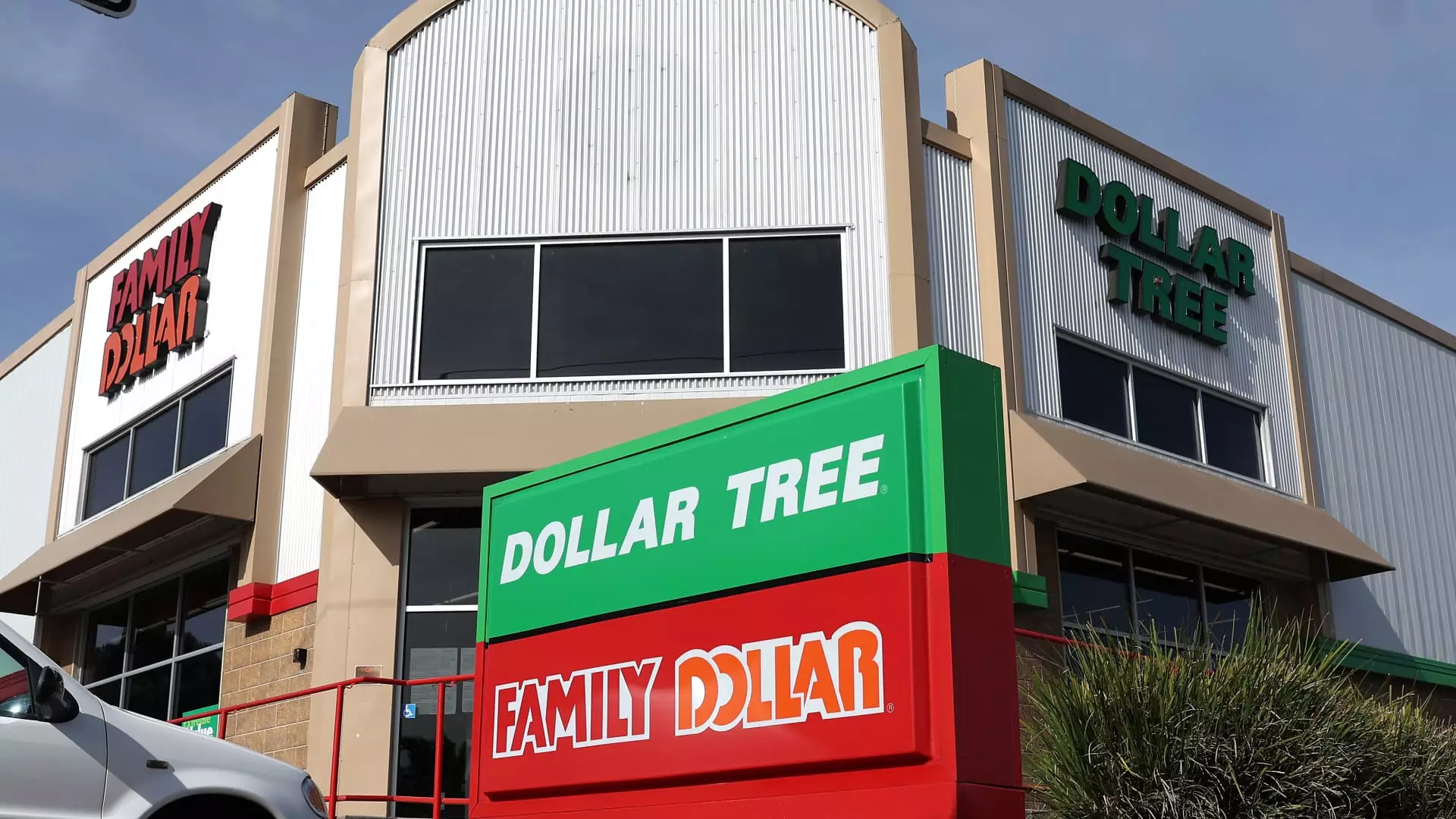The retail sector, particularly dollar stores, is witnessing a significant paradigm shift as economic pressures mount. Dollar Tree, a well-known discount retailer, has placed itself at the forefront of this troubling narrative, announcing a substantial downgrade in its financial outlook. As a consequence, the company’s shares experienced a staggering decline of over 15% in early trading following the announcement. This article dissects the reasons behind Dollar Tree’s struggles, scrutinizes the implications of its updated earnings forecast, and examines the broader retail environment that contributes to these trends.
Dollar Tree’s revised full-year outlook is alarming for shareholders and the broader market. The retailer now projects consolidated net sales to hover between $30.6 billion and $30.9 billion, a stark decline from its previous guidance of $31 billion to $32 billion. Similarly, adjusted earnings per share (EPS) expectations have dropped from an earlier estimate of $6.50 to $7 to a new forecast of $5.20 to $5.60. This dramatic adjustment reflects not only the weakening performance within its stores but also the unsettling economic environment that is squeezing both middle-income and higher-income shoppers more than anticipated.
The CFO of Dollar Tree, Jeff Davis, emphasized that the modified outlook is a response to declining sales coupled with the high operational costs associated with converting 99 Cents Only chains. Furthermore, the company has been entangled in higher expenses related to customer claims. This intersection of rising expenses and declining sales demonstrates a classic dilemma many retailers now face: balancing operational costs while maintaining customer satisfaction.
In terms of sales performance during the fiscal second quarter, the numbers provide a mixed but troubling picture. Dollar Tree reported earnings per share of 97 cents, falling short of the Wall Street consensus of $1.04. Revenue of $7.38 billion also did not meet expectations, trailing behind the projected $7.49 billion. Such discrepancies lead to questions about the company’s future trajectory, particularly as they relate to changes in consumer behavior.
Interestingly, while Dollar Tree recorded a modest 1.3% increase in same-store sales, Family Dollar—the other significant division—saw a slight decline of 0.1%. This divergence underscores how the brand’s varied customer bases are reacting differently to economic pressures. The notion that upscale shoppers are now feeling the pinch reflects a wider trend in consumer behavior, wherein past spending patterns are shifting rapidly due to financial constraints.
This predicament isn’t isolated to Dollar Tree alone; it exists within a larger context of increased competition among value retailers. Dollar General, a key rival, also recently slashed its sales and profit forecasts, attributing the downturn to a customer base that increasingly feels financially restricted. The competitive dynamics within this space highlight that value-conscious shoppers have more options than ever. Retail giants like Walmart have successfully captured market shares of budget-conscious consumers across various income brackets, while new entrants such as Temu lure customers with aggressively priced goods.
The growing pressure in the discount retail sector implies that Dollar Tree’s long-standing strategy may require reevaluation. Acquisitions such as Family Dollar, initially seen as a method to strengthen market positioning, are now sources of contention due to underperformance and subsequent store closures.
Another significant hurdle for Dollar Tree is the rising costs related to legal claims. Davis mentioned during the earnings call that the outcome of such claims has become increasingly difficult to manage. The company now faces heightened costs from settlements and litigation, driven significantly by a “volatile insurance environment.” The combination of financial uncertainty and the unpredictability of operational costs around liability claims compounds the multitude of challenges the retailer is now grappling with.
Dollar Tree’s situation exemplifies the broader issues facing discount retailers amidst inflationary pressures and evolving consumer expectations. As the company looks to navigate these turbulent waters, it will need to find innovative strategies to address both external pressures and internal challenges to reclaim its footing in a rapidly changing retail landscape. The road ahead may be fraught with difficulties, but adaptation and strategic foresight will be pivotal for Dollar Tree’s resurrection in the market.

